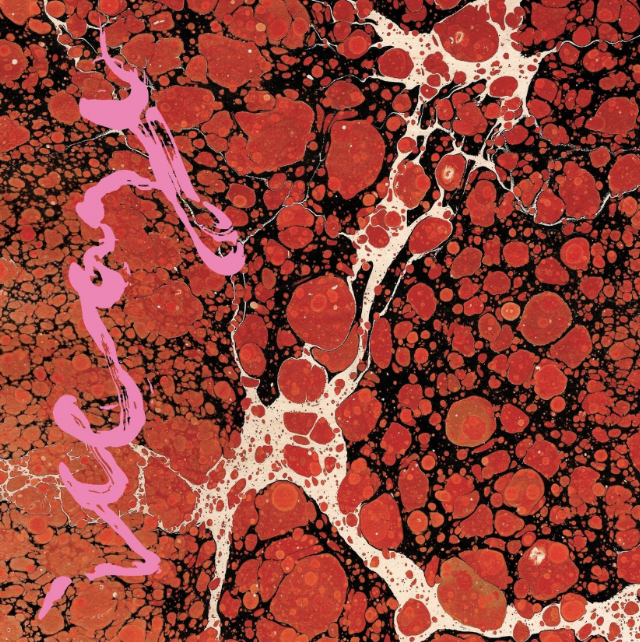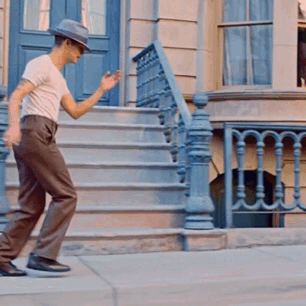I'm slightly back to the main(er)stream on this one after two very out there posts - but only slightly. Iceage are a gang of carefree Copenhagen rebels who played aggressive post-punk and gained quite a lot of attention in those circles for their first two albums New Brigade and You're Nothing. However, they shifted gear slightly on 2014's Plowing Into the Field of Love, where especially lead single "The Lord's Favorite" caught mine and a lot of other people's eye. It's a kinda pompous, country-tinged song where Iceage keep all of their unpolished jangliness but drench it in champagne, and the result is a really fun song that also sounds super different. To the pleasure of many, and the woe of others, this is the direction Iceage have pursued on their long-awaited new album, Beyondless.
The pallette on Beyondless doesn't seem like much of a punk aesthetic. Horns, strings, chimes, basically every song is adorned with rococo embellishments, stealing more than a couple pages from Kaizers Orchestra's book. There's even what sounds like burlesque dance numbers several places. But Iceage don't abandon their post-punk roots, rather I really think they've evolved their sound in an interesting new way. For all its jangly guitars and saloon pianos Beyondless sounds surprisingly modern. It's so on point. Not overstuffed or annoying, just tastefully different. I love it.
Iceage singer and songwriter Elias Bender Rønnenfeldt is rapidly morphing in to the millenial version of Nick Cave, both his lyrics, persona and singing style channeling the prince of darkness more and more for each iteration. And it's not cheap imitation - Rønnenfeldt holds his own, especially as a lyricist, 'smart and hyper-literate'. Though slightly impenetrable due to their archaic vocabulary and meandering metaphors, reading the lyrics to the songs as poetry reveals some pretty cool insights into Rønnenfeldt's messed up mind. The most direct are opening track "Hurrah", a deeply sarcastic ode to war told from the first person view of a bloodthirsty soldier; and the equally in-your-face on "Showtime", a vaudevillian piece where a singer not entirely unlike Elias shoots himself on stage at the end of a sold out and critically lauded show. Otherwise Rønnenfeldt's meanings are harder to decipher, but there's an overarching feeling of violence, desolation and catharsis, at both personal and societal levels. He took the word "Beyondless" from Samuel Beckett's word-bending novella "Worstward Ho", and the album certainly speaks about something without a beyond, if that's a thing.
The rest of the guys hold their own as well. The drumming especially stands out - every song on the album is instantly recognizable from its drum patterns. Together with the guitars and bass the group has this tightness that only jamming together since childhood can produce, allowing for seamless transitions in tempo and dynamics. And the production is absolutely beautiful, all the additional instruments taking up their respective places in the sonical landscapes. Even on a busy song like "The day the music dies" you can easily choose if you want to focus your attention on the chugging rhythm guitar, the horns, the keys, the bass, the vocals, or the barrage of percussion. On a more abstract song like "Take it all", an amazing string section, sparse guitar riffs, lingering bass notes and an absolutely captivating vocal performance manage to build up to the best climax on the album, even though almost nothing happens. It's a stunning piece in its relative restraint, achieving devastating emotional impact from a simple unexpected chord change.
There's not a bad song on the album, but there are standouts. The aforementioned "Take it all" and "Showtime" ensure that the album ends on an even stronger note than it opens on. Besides this, the drunken stumble of "Catch it" is a winning blend of old and new Iceage, the awesome freak-out bridge morphing beautifully back into the song for a thrilling, screeching ending. And easily the poppiest song on the album, "Pain killer", featuring Sky Ferreira on guest vocals, is also a favorite of mine. It's simply a killer song with its brass section, fun chorus (alright alright alright) and great guitar riffs. Love it. And check out the lyrics - it's not your run of the mill love song.
Well done Iceage. Awesome album. I've played the hell out of this thing.
Best tracks: "Take it all", "Showtime", "Pain killer", "Catch it"
 |
| Dope. |
The pallette on Beyondless doesn't seem like much of a punk aesthetic. Horns, strings, chimes, basically every song is adorned with rococo embellishments, stealing more than a couple pages from Kaizers Orchestra's book. There's even what sounds like burlesque dance numbers several places. But Iceage don't abandon their post-punk roots, rather I really think they've evolved their sound in an interesting new way. For all its jangly guitars and saloon pianos Beyondless sounds surprisingly modern. It's so on point. Not overstuffed or annoying, just tastefully different. I love it.
Iceage singer and songwriter Elias Bender Rønnenfeldt is rapidly morphing in to the millenial version of Nick Cave, both his lyrics, persona and singing style channeling the prince of darkness more and more for each iteration. And it's not cheap imitation - Rønnenfeldt holds his own, especially as a lyricist, 'smart and hyper-literate'. Though slightly impenetrable due to their archaic vocabulary and meandering metaphors, reading the lyrics to the songs as poetry reveals some pretty cool insights into Rønnenfeldt's messed up mind. The most direct are opening track "Hurrah", a deeply sarcastic ode to war told from the first person view of a bloodthirsty soldier; and the equally in-your-face on "Showtime", a vaudevillian piece where a singer not entirely unlike Elias shoots himself on stage at the end of a sold out and critically lauded show. Otherwise Rønnenfeldt's meanings are harder to decipher, but there's an overarching feeling of violence, desolation and catharsis, at both personal and societal levels. He took the word "Beyondless" from Samuel Beckett's word-bending novella "Worstward Ho", and the album certainly speaks about something without a beyond, if that's a thing.
The rest of the guys hold their own as well. The drumming especially stands out - every song on the album is instantly recognizable from its drum patterns. Together with the guitars and bass the group has this tightness that only jamming together since childhood can produce, allowing for seamless transitions in tempo and dynamics. And the production is absolutely beautiful, all the additional instruments taking up their respective places in the sonical landscapes. Even on a busy song like "The day the music dies" you can easily choose if you want to focus your attention on the chugging rhythm guitar, the horns, the keys, the bass, the vocals, or the barrage of percussion. On a more abstract song like "Take it all", an amazing string section, sparse guitar riffs, lingering bass notes and an absolutely captivating vocal performance manage to build up to the best climax on the album, even though almost nothing happens. It's a stunning piece in its relative restraint, achieving devastating emotional impact from a simple unexpected chord change.
There's not a bad song on the album, but there are standouts. The aforementioned "Take it all" and "Showtime" ensure that the album ends on an even stronger note than it opens on. Besides this, the drunken stumble of "Catch it" is a winning blend of old and new Iceage, the awesome freak-out bridge morphing beautifully back into the song for a thrilling, screeching ending. And easily the poppiest song on the album, "Pain killer", featuring Sky Ferreira on guest vocals, is also a favorite of mine. It's simply a killer song with its brass section, fun chorus (alright alright alright) and great guitar riffs. Love it. And check out the lyrics - it's not your run of the mill love song.
Well done Iceage. Awesome album. I've played the hell out of this thing.
Best tracks: "Take it all", "Showtime", "Pain killer", "Catch it"











